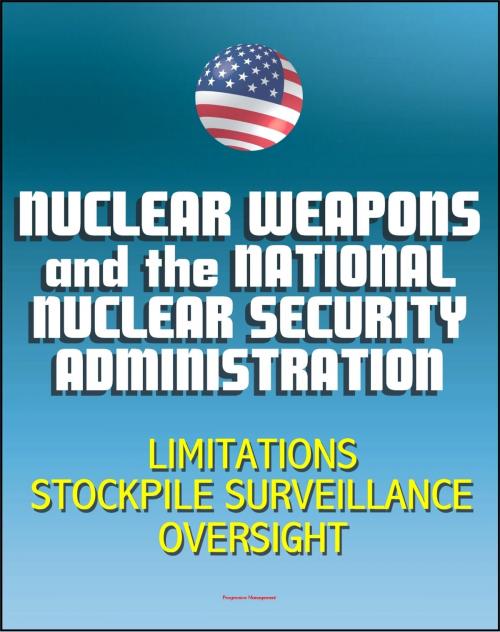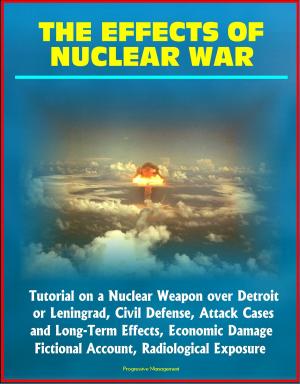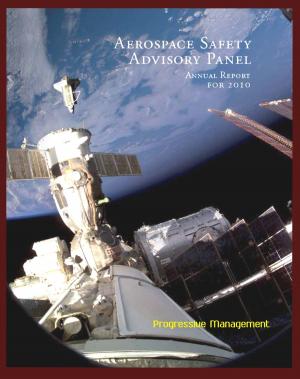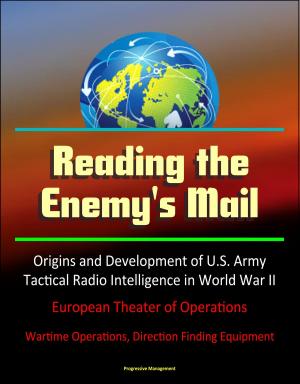Nuclear Weapons and the National Nuclear Security Administration (NNSA) - 2012 Issues with Weapon Limitations, Stockpile Surveillance Program, Management and Oversight
Nonfiction, History, Military, Nuclear Warfare, Science & Nature, Technology, Military Science| Author: | Progressive Management | ISBN: | 9781466100497 |
| Publisher: | Progressive Management | Publication: | February 17, 2012 |
| Imprint: | Smashwords Edition | Language: | English |
| Author: | Progressive Management |
| ISBN: | 9781466100497 |
| Publisher: | Progressive Management |
| Publication: | February 17, 2012 |
| Imprint: | Smashwords Edition |
| Language: | English |
Most weapons in the U.S. nuclear stockpile were produced over 20 years ago and are being sustained beyond original design lifetimes. It is critical to ensure that these weapons are safe, secure, and reliable to perform as the nation's nuclear deterrent. The National Nuclear Security Administration (NNSA), a semiautonomous agency within the Department of Energy, is responsible for the nation's nuclear weapons program. NNSA identifies nuclear weapon limitations—areas where military requirements may not be met—and conducts nonnuclear tests to evaluate the condition and reliability of weapons through its nuclear stockpile surveillance program. GAO was asked to determine the (1) number and types of such limitations and any concerns raised by Department of Defense (DOD) officials, and (2) actions NNSA has taken to implement its prior recommendations for the nuclear stockpile surveillance program. GAO reviewed agency documents, analyzed limitations, and interviewed key NNSA and DOD officials.
In a February 2012 report, for the 52 NNSA identified limitations for all weapons in the U.S. nuclear stockpile, 86 percent fall into six types: detonation safety under abnormal conditions, weapon reliability, weapon delivery, more frequent replacement of limited life components, nuclear yield, and worker safety. Some DOD officials expressed concern over the impact that certain weapon limitations have on weapon operation, maintenance, and war planning. According to DOD officials, current DOD mitigation actions, as well as the successful completion of ongoing and planned NNSA efforts, should address most limitations for which the officials raised concerns. DOD officials stated that the current stockpile allows sufficient flexibility to mitigate limitations. However, they told GAO that there may be less flexibility in the future as the stockpile continues to age and decreases in size.
In separate testimony, a GAO official addresses (1) NNSA's ability to produce budget and cost data necessary to make informed management decisions, (2) improving NNSA's project and contract management, and (3) DOE's and NNSA's safety and security oversight.
This is a privately authored news service and educational publication of Progressive Management. Our publications synthesize official government information with original material - they are not produced by the federal government. They are designed to provide a convenient user-friendly reference work to uniformly present authoritative knowledge that can be rapidly read, reviewed or searched. Vast archives of important data that might otherwise remain inaccessible are available for instant review no matter where you are. This e-book format makes a great reference work and educational tool. There is no other reference book that is as convenient, comprehensive, thoroughly researched, and portable - everything you need to know, from renowned experts you trust. For over a quarter of a century, our news, educational, technical, scientific, and medical publications have made unique and valuable references accessible to all people. Our e-books put knowledge at your fingertips, and an expert in your pocket!
Most weapons in the U.S. nuclear stockpile were produced over 20 years ago and are being sustained beyond original design lifetimes. It is critical to ensure that these weapons are safe, secure, and reliable to perform as the nation's nuclear deterrent. The National Nuclear Security Administration (NNSA), a semiautonomous agency within the Department of Energy, is responsible for the nation's nuclear weapons program. NNSA identifies nuclear weapon limitations—areas where military requirements may not be met—and conducts nonnuclear tests to evaluate the condition and reliability of weapons through its nuclear stockpile surveillance program. GAO was asked to determine the (1) number and types of such limitations and any concerns raised by Department of Defense (DOD) officials, and (2) actions NNSA has taken to implement its prior recommendations for the nuclear stockpile surveillance program. GAO reviewed agency documents, analyzed limitations, and interviewed key NNSA and DOD officials.
In a February 2012 report, for the 52 NNSA identified limitations for all weapons in the U.S. nuclear stockpile, 86 percent fall into six types: detonation safety under abnormal conditions, weapon reliability, weapon delivery, more frequent replacement of limited life components, nuclear yield, and worker safety. Some DOD officials expressed concern over the impact that certain weapon limitations have on weapon operation, maintenance, and war planning. According to DOD officials, current DOD mitigation actions, as well as the successful completion of ongoing and planned NNSA efforts, should address most limitations for which the officials raised concerns. DOD officials stated that the current stockpile allows sufficient flexibility to mitigate limitations. However, they told GAO that there may be less flexibility in the future as the stockpile continues to age and decreases in size.
In separate testimony, a GAO official addresses (1) NNSA's ability to produce budget and cost data necessary to make informed management decisions, (2) improving NNSA's project and contract management, and (3) DOE's and NNSA's safety and security oversight.
This is a privately authored news service and educational publication of Progressive Management. Our publications synthesize official government information with original material - they are not produced by the federal government. They are designed to provide a convenient user-friendly reference work to uniformly present authoritative knowledge that can be rapidly read, reviewed or searched. Vast archives of important data that might otherwise remain inaccessible are available for instant review no matter where you are. This e-book format makes a great reference work and educational tool. There is no other reference book that is as convenient, comprehensive, thoroughly researched, and portable - everything you need to know, from renowned experts you trust. For over a quarter of a century, our news, educational, technical, scientific, and medical publications have made unique and valuable references accessible to all people. Our e-books put knowledge at your fingertips, and an expert in your pocket!















